This is a continuation of a series of posts on the Fuji GFX 50S. You should be able to find all the posts about that camera in the Category List on the right sidebar, below the Articles widget. There’s a drop-down menu there that you can use to get to all the posts in this series; just look for “GFX 50S”.
I’ve been presenting my autofocus accuracy data in a new form for the last two posts. Now I’ll do the same for some GFX tests. Comments are below the graphs.
Before we turn on the AF system, let’s get an idea of how much focus shift we’re dealing with.
The vertical axis is the diameter of the misfocus-induced circle of confusion (CoC) in micrometers. The heavier lines are the mean of the 10 samples per aperture per camera. The lighter lines are the mean-plus-sigma, and mean-minus-sigma data (Sigma is shorthand for standard deviation). I have established a convention which reports back-focusing as positive CoC diameter, and front focusing as negative diameter.
The 63 mm f/2.8 has very little focus shift. The 45 mm f/2.8 has some. The 110 mm f/2 has some between f/2 and f/2.2 but settles down after that. The above graph has a coarse vertical scale (+/- 20 micrometers) because I couldn’t get all the curves on the graph at my fine scale.
The 32-64 zoom has little focus shift at 32mm and 64 mm, but there is enough to be concerning at 64 mm. This graph has the fine vertical scale of +/- 10 micrometers).
In both AFC and AFS modes, the GFX compensates (actually over-compensates) for the focus shift of the 110mm f/2 lens. Back to the coarse scale.
In AFS mode, the GFX provides excellent results with the 32-64 f/2.8. Note that I’ve changed the vertical scale back to the fine one.
Here’s a comparison of the 63 and the 110 to the 32-64 at 64 mm with the fine scale. In all cases, the CoCs are one the order of one pixel pitch, or less than that.
Finally, here’s a comparison to the D850 and the a7RIII:
There are focusing modes that narrow the spread of the D850, and there are Nikon lenses with much less focus shift than the 58mm f/1.4 so the apparent gap could be closed to some extent. But the above graph shows the D850 with optimal AF Adjustment tuning. The a7RIII and the GFX need no such tuning.
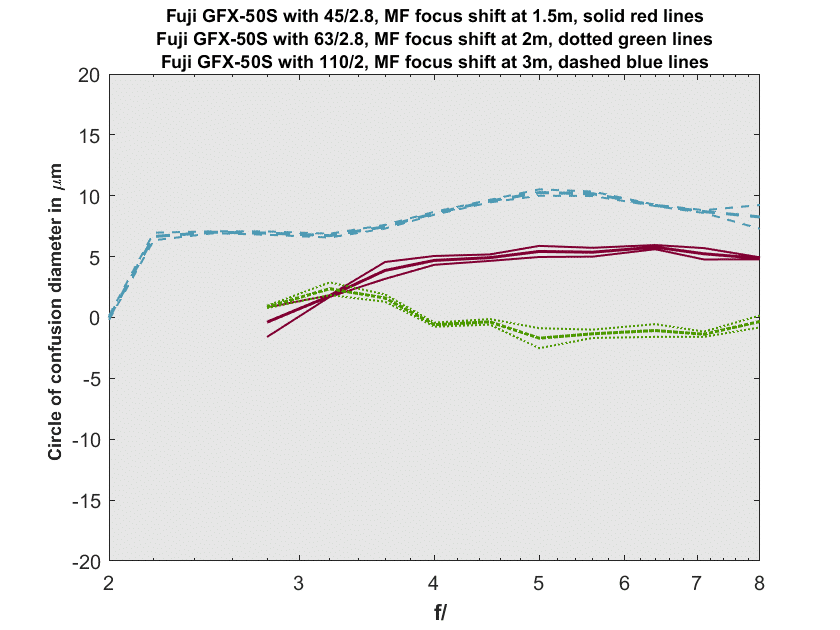
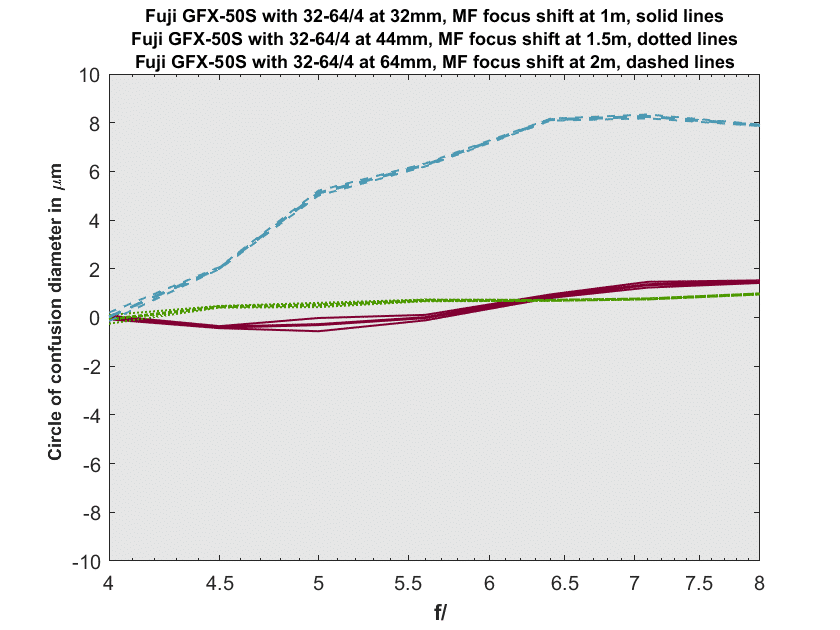
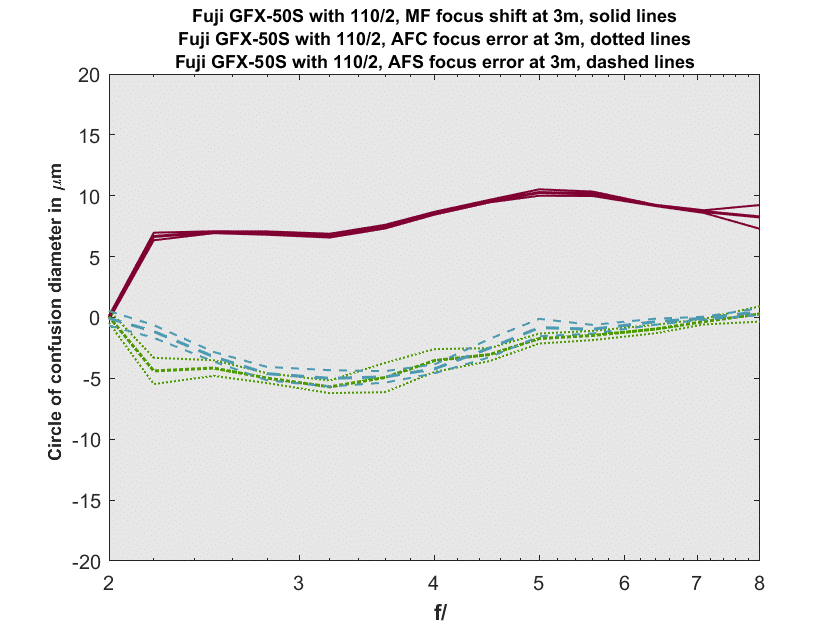
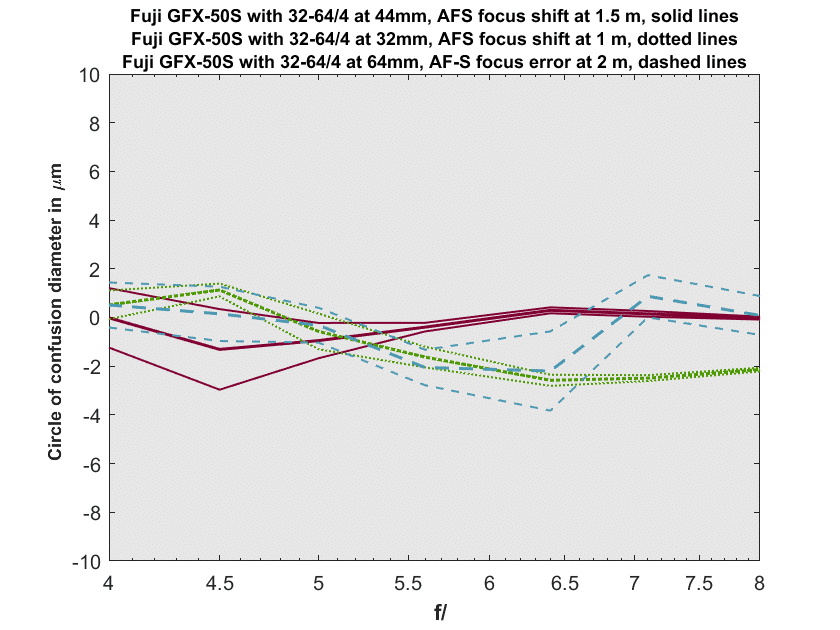
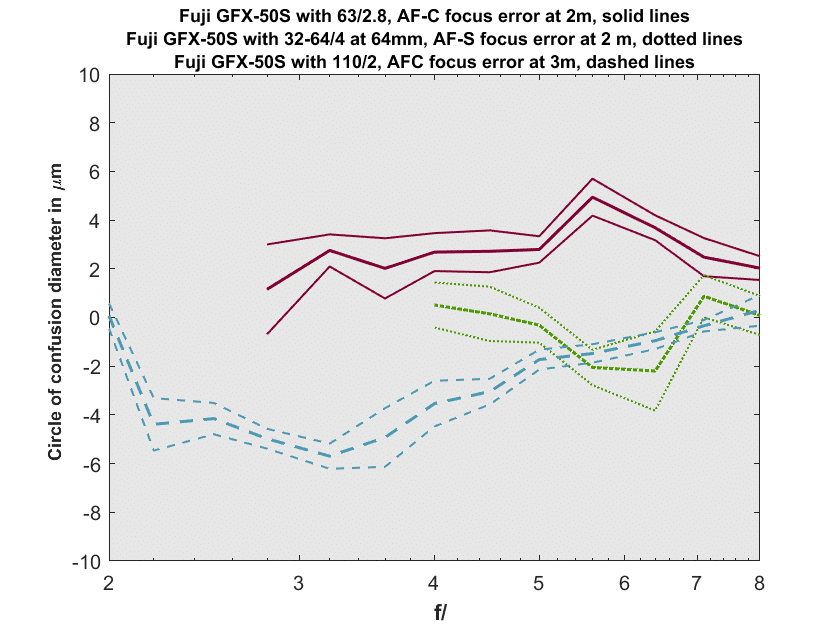
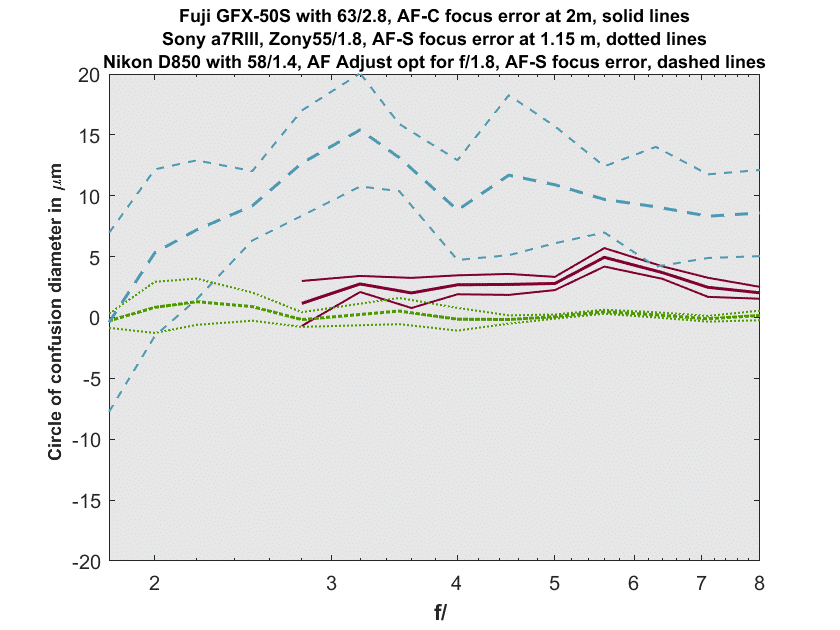
Hi;
In another post you have told that 45mm has a huge amount of focus shift and at last i must be focused in stop down mode with f4 or even f5.6And now here you say “The 63 mm f/2.8 and the 45 mm f/2.8 have very little focus shift.”
I am a bit confused 🙂
It appears to be a discrepancy. Let me look into that.
Graph and commentary are now corrected. Thanks.
So sould i think it has minimum focus shift?
As I said above: “It appears to be a discrepancy. Let me look into that.”